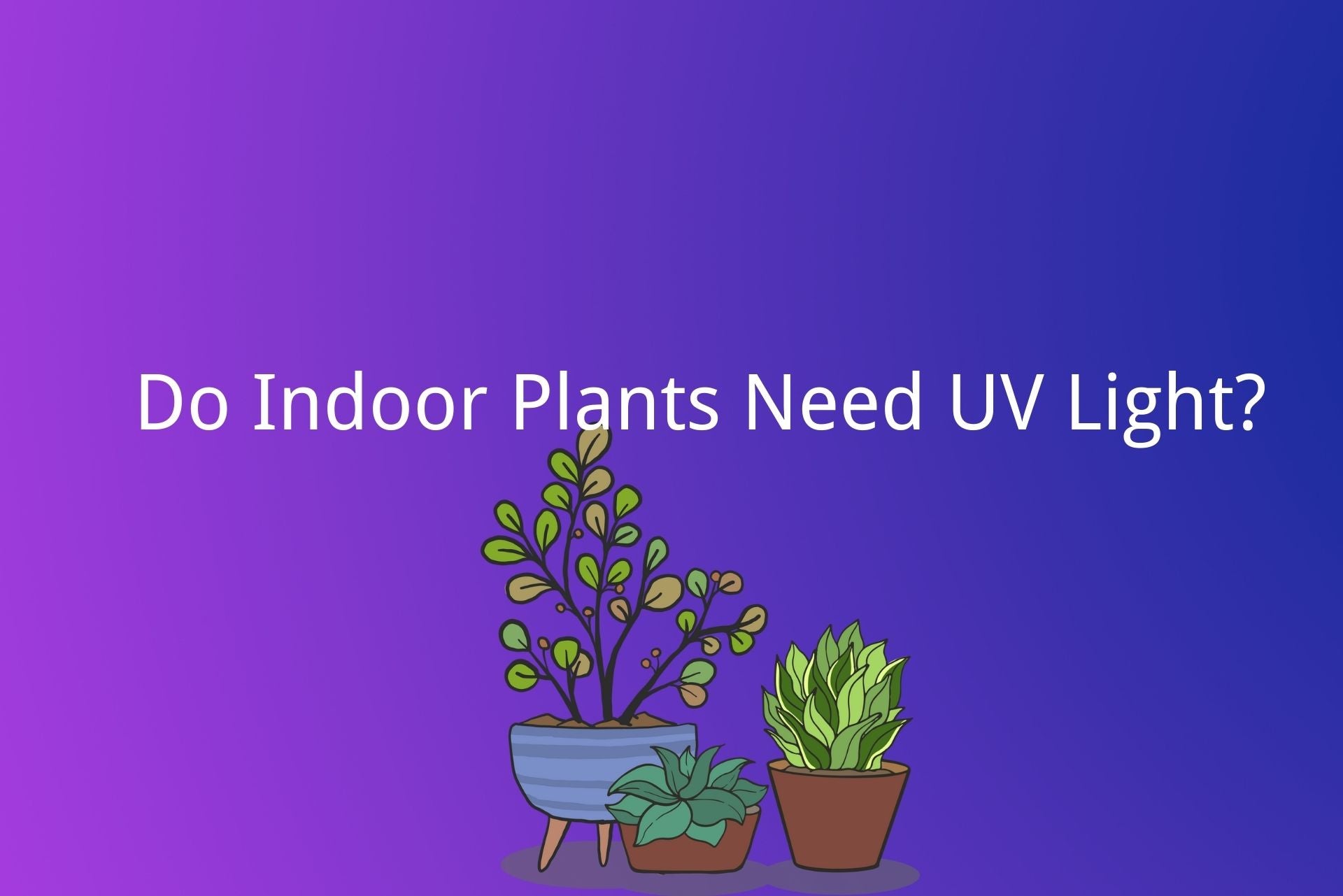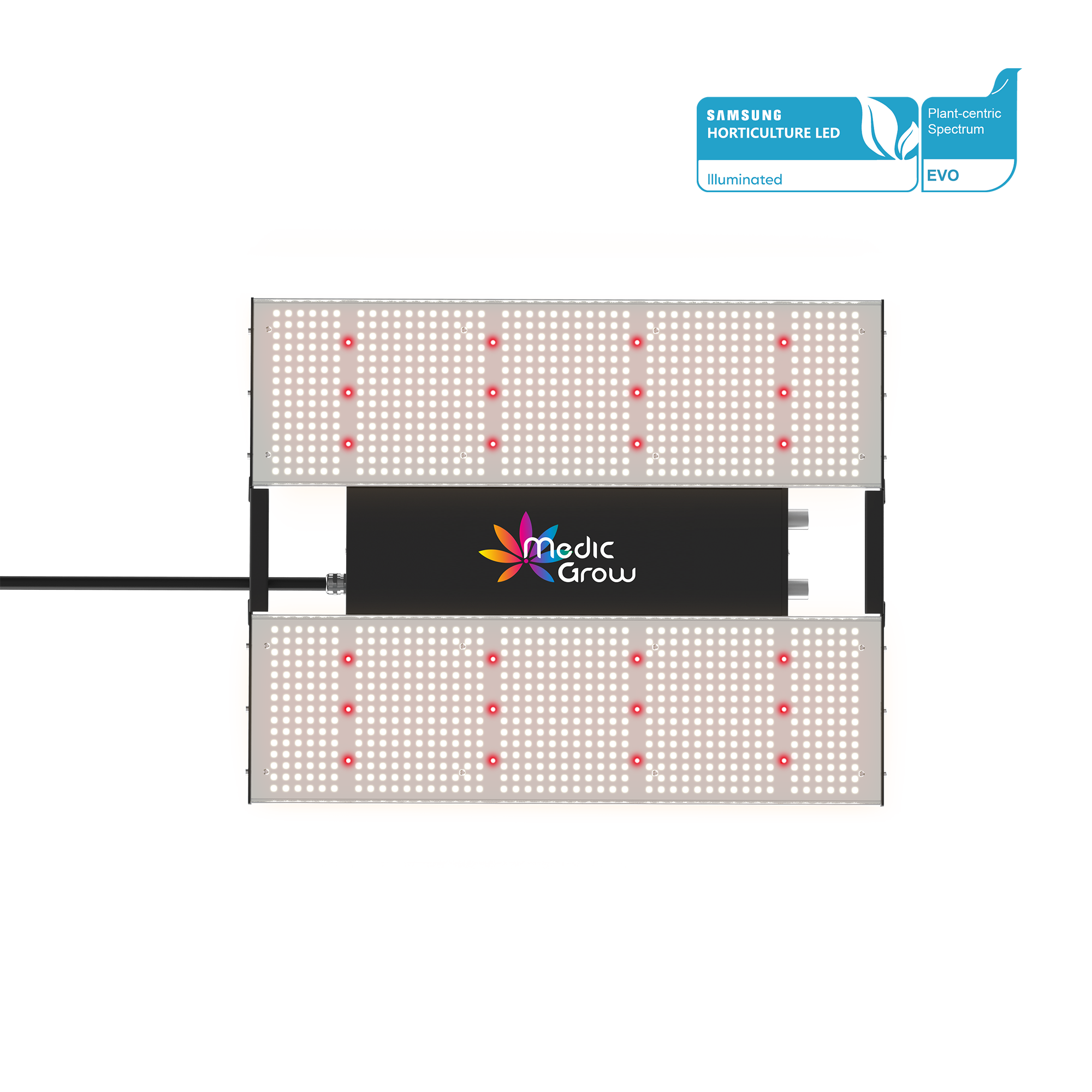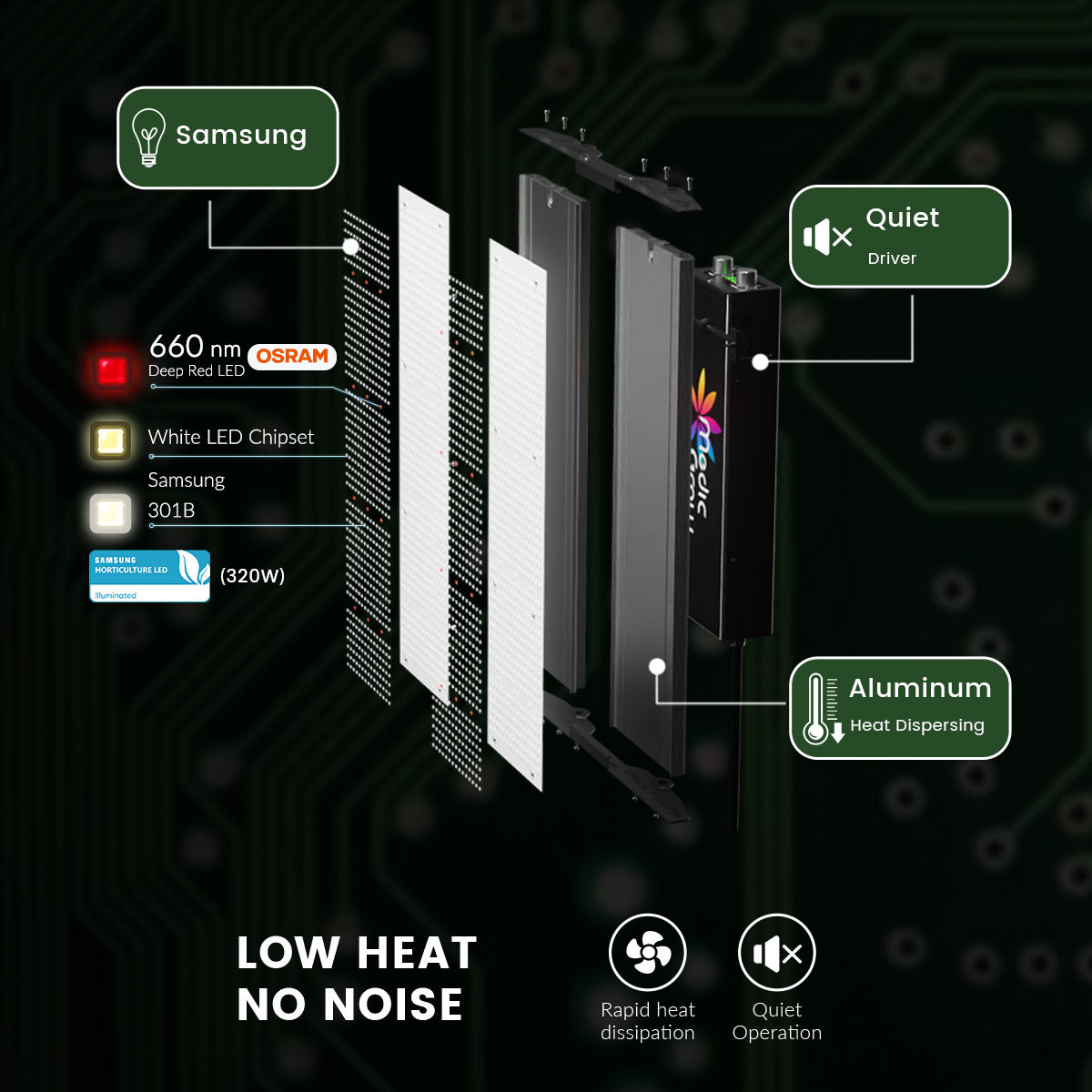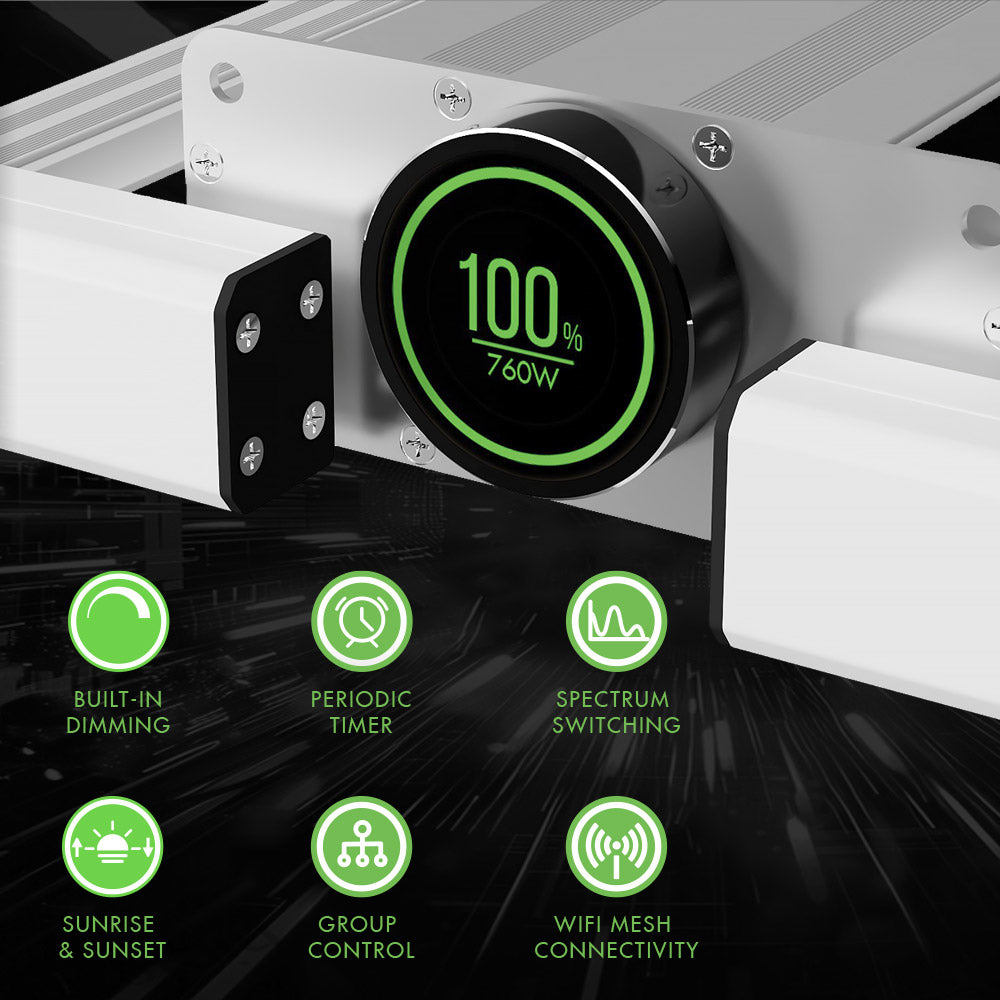
Do Plants Need UV Light? Everything About UV Light for Plants
UV lamp for plants has always remained a hot topic for debate when it comes to indoor plants. Some misconceptions and myths create much confusion for indoor growing beginners. It is a component of natural sunlight, but we still have questions about its effects on plants, whether it is harmful or not.
In this article, Medicgrow will have an in-depth look at UV lights for plants, their benefits and effects on plants, and how you can give your plants UV light. We will discuss different types of UV light to know which are beneficial for your plants.
Main Content:
- 1. What Is Plants UV?
- 2. Are Plants Affected by UV?
- 3. Do plants need UV light?
- 4. Would a UVB Light Grow Plants?
- 5. Benefits of UV Lights for Indoor Plants
- 6. How Can You Give Plants UV Light?
- 7. FAQs about UV Lamp for Plants
What Is Plants UV?
Plants UV refers to Ultraviolet electromagnetic radiations that are present in the sunlight and UV light for plants often mimics the sun for indoor growing. Its wavelength is less (between 10 and 400 nanometers) while the frequency is more than the violet radiations present in the visible range, which is why it is known as the plant UV.

Image Source: verilux.com
Are Plants Affected by UV?
Yes, getting plants UV light significantly affects plants, with the impact varying based on wavelength and intensity. UV-A light (320-400 nm) is generally beneficial, enhancing a plant’s defense mechanisms and improving resistance to pests and diseases. UV-B light (280-320 nm) can stimulate the production of secondary metabolites, but excessive plants UV exposure can damage plant tissues, leading to stunted growth and leaf burn.
UV-C light (100-280 nm) is the most destructive, and while plants are rarely exposed to it in natural environments, plants UV-C is sometimes used for sterilization in controlled settings. However, direct exposure to UV-C can severely damage plant tissues. Therefore, while moderate exposure to UV-A and UV-B can promote growth and increase yields, careful control is necessary to prevent harm to the plants.
Do plants need UV light?
Yes, plants can benefit from UV light. Here's how the plants UV light affects plants:
1) UVA
The plants UV-A have a wavelength range of 315-400 nanometers. This type of UV light is the least harmful and can positively influence plant growth. It can enhance the production of certain secondary metabolites like flavonoids and scent compounds, which can improve the scent, strength and flavor of plants.
Besides, plants UV-A is the best UV light for indoor plants. It does not damage the plant's DNA or harm plants in any way; instead, it offers various benefits, such as protection from fungi and molds.
Indoor plants should receive UVA light from UV grow lights as it is highly beneficial and has no side effects. It's advisable to get your indoor plants UVA and UVB light through LED grow lights, such as the Medicgrow Grow Spectrum-Y, which can improve your plant's strength and reduce your electric bill.
2) UVB
UVB has a wavelength range of 280-315 nanometers, which is a narrow range compared to UVA. UV-B light can be more harmful but, in controlled doses, it can stress the plants in a way that triggers protective responses. This includes increasing the production of certain compounds, which can lead to higher-quality produce. However, excessive UV-B exposure can damage plant cells and reduce growth.
3) UVC
The wavelength of UVC light ranges from 100-280 nanometers, which is the widest range compared to other type of plants UV. This type of UV light is harmful to plants and is generally not used in plant cultivation. It can damage DNA and other cellular structures.
UV light bulbs for plants are not essential for indoor plant growth like blue and red light, but they can enhance secondary metabolite production. The key to using UV light effectively in plant cultivation is moderation.
Too many plants UV, especially UV-B and UV-C, can harm plants. When it comes to plant cultivation, incorporating UV-A and controlled amounts of UV-B can improve the strength and quality of the harvest, but it's important how to use UV growing lights for higher yields.

Would a UVB Light Grow Plants?
Yes, UVB light can grow plants. UVB light can induce stress in plants, leading to the production of secondary metabolites such as flavonoids and scent compounds in plants. These compounds are often desirable for enhancing flavor, scent, and strength.
However, UVB light alone is insufficient to grow plants. It lacks the essential wavelengths needed for photosynthesis. UVB lights can be used as a supplement in a grow light setup that already provides the necessary full spectrum of light for plant growth.
We already know that indoor plants require UV-growing lights to thrive. Let's see how a UV lamp for plants enhances plant growth, quality, and other aspects.
Benefits of UV Lights for Indoor Plants
We've learned that plants plants need UV lights, but how do indoor plant lamps affect plants' growth? Here are 3 main benefits of UV lights for plants.
Better Growth
Exposure to UV plant light improves plants' overall growth. It speeds up photosynthesis, which leads to faster growth, especially in a growing tent. If UV light is given under safe limits, it can improve the growth, including the size and weight of the leaf and flower.
Specifically, UVA increases the leaf size and improves biomass production in plants. According to a study on lettuce, when UVA is supplied to the plant, 15-19% higher shoot dry weight is observed. It increases biomass production to optimum conditions.
According to the study, the shape and growth of lettuce plants were greatly improved when UVA light was introduced. The best result was obtained when the UVA was 10 µmol m−2 s−1. When it was increased to 30 µmol m−2 s−1, the outcome was not as promising but was still better than no UVA.

Improved Quality
The quality of plants is greatly improved by UV growing lights. It improves the weight, flavor, size, and aroma of the plants. UV rays also help in the production of resin, which is immensely beneficial for the strength, scent and flavor of plants.
Therefore, commercial growers prefer plants with UV commercial grow lights to improve the quality and yield of the harvest.
Protects Plants
Plants that do not get plants UV light are more prone to pest attacks and microorganisms. UV growing light and indoor grow tent kit helps plants protect themselves.
Due to the introduction of UV plant light, the plant produces more resin that protects them from pests. There are various proteins produced after the introduction of UV light; consequently, the plant is saved from harmful organisms.
How Can You Give Plants UV Light?
In your grow room, you can use a UV lamp for plants to get plants UV lights. You might be thinking about which grow lights you can use and how to use them. As far as the UV growing lights are concerned, LED grow lights, fluorescent lights, and HID lights produce UV lights. You can use any of them for UV; however, an LED UV lamp for plants are the best.
LED grow lights, such as 1000-watt grow lights, are the most efficient grow lights; around 90% of the electrical energy is converted into light which reduces heat emission. Due to high efficiency, it saves energy and reduces electricity bills.
LED grow lights emit UV and IR radiation. But if you want more control over UV or IR, there should be separate bars in the light. Medicgrow Spectrum X and Spectrum-Y contain two UV+IR bars that give you more control over the radiation. You can ensure optimal growth by using these UV light bulbs for plants.
It's important to maintain a proper distance between your UV grow lights and your plants to avoid issues like plant light burn. Begin by placing the plants' UV light 24 to 30 inches away from the plant, and adjust based on the plant's growth stage. Additionally, be mindful of the duration of UV exposure for the plant.
How Long to Leave UV Light on Plants?
When using plants UV light to irradiate plants, the duration depends on the type of light, the stage of growth of the plant, and the intensity of the light. UV-A light can be used for 2-4 hours per day during the nutrient growth phase, and this can be increased to 4-6 hours per day during the flowering phase, helping to enhance plant health and potentially resin production.
UV-B light requires caution and is not usually used during the nutrient growth period. It can be gradually increased to a maximum of 2-3 hours per day, starting at 15 minutes per day during the flowering period to enhance resin production and strength.
Care needs to be taken to avoid harming the plant when using a UV lamp for plants. It's important to regularly observe plants for signs of stress, such as leaf curling or discoloration, and adjust the timing and distance of UV light bulbs for plants accordingly.

Related Posts:
When Should You Replace Your Grow Light Bulbs?
Sealed Grow Room Basics: What Growers Should Know?
What is Light Burn: How to Fix it?
FAQs about UV Lamp for Plants
1. Do LED Grow Lights Need UV?
Yes, LED grow lights can benefit from including UV light, as they can enhance resin production, improve flavor and aroma in plants, and promote stronger, more resilient growth. However, it's important to use UV light in moderation to avoid causing stress to the plants.
2. Would a UVB Light Grow Plants?
Yes, UVB light can help plants grow. It stimulates the production of protective compounds, enhances pigmentation, and improves the flavor and aroma of certain crops. In addition to UVB light, it's also important to provide a full-spectrum grow light that includes blue and red wavelengths for more effective plant growth.
3. What Is the Best Light for Indoor Plants?
The best light for indoor plants is full-spectrum LED grow lights that mimic natural sunlight, including blue (400-500 nm) and red (600-700 nm) wavelengths essential for vegetative growth and flowering, respectively.
While UV light can offer benefits such as stimulating protective compound production and enhancing pigmentation, it should only be used as a supplementary light source.
4. Do Plants Need UV Light?
Yes, plants need UV light, especially UV-A (320-400 nm) and UV-B (280-320 nm), which can stimulate nutrient uptake, leading to healthier and more robust growth.
It also boosts the production of protective compounds like flavonoids and scent compounds, which enhance the plant's resistance to pests and diseases and improve the flavor and aroma of certain crops.
Additionally, UV light can enhance pigmentation, resulting in more vibrant colors in fruits and flowers, and improve the taste of some crops.
Featured Products
Blog Posts
Contact Us with Any Idea!
- Choosing a selection results in a full page refresh.
!
































